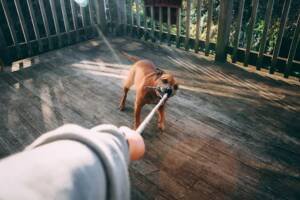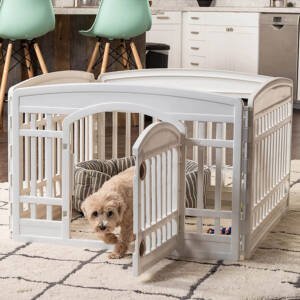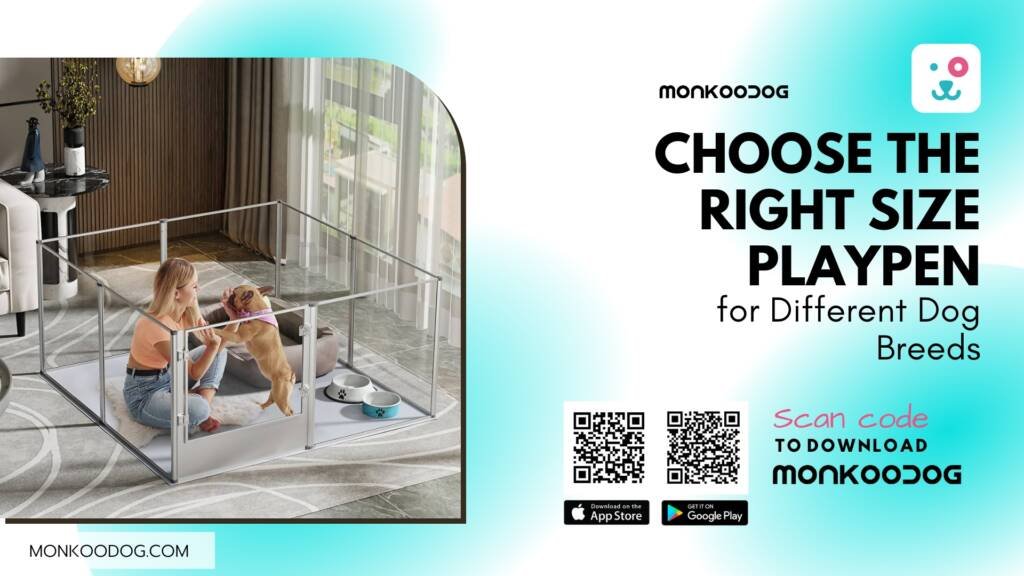Selecting the appropriate playpen size is critical to ensure the safety, comfort, and well-being of your furry friend. This guide will help you navigate the complexities of choosing a playpen by focusing on breed categories, activity levels, and essential playpen features.
Understanding Dog Breed Categories
To properly choose a playpen size, it’s important to understand the various dog breed categories: toy, small, medium, and large. These classifications are based on size, temperament, lifespan, and nutritional needs.
Toy and Small Breeds: Breeds like Chihuahuas and Shih Tzus require less space and nutrition but play pen that allow adequate room to move and play.
Medium and Large Breeds: Breeds such as German Shepherds and Labrador Retrievers need more space due to their size and higher energy levels.
Understanding these categories helps in making an informed decision when choosing a right size for your pet.
Importance of a Dog’s Size

A dog’s size significantly influences the selection of an appropriate playpen. It’s essential to comprehend breed size differences as they impact the features necessary for your dog’s comfort and safety.
Understanding Breed Size Differences
Breed size differences affect mobility, activity levels, and space requirements. For example, smaller breeds live longer but may have specific health conditions affecting their space needs. Medium or Larger breeds may need more space due to their higher energy levels.
Impact on playpen Selection
The right playpen should offer sufficient space for your pet to move around freely. Space limitations in your home also affect the size of the play pen you can accommodate. Balancing your dog’s size and your available space is important to create a comfortable environment for your pet.
Size-Friendly Playpen Features
Key features to consider include portability, maintenance ease, and durability. A portable playpen can be adjusted according to your dog’s growth and needs. Maintenance is crucial for hygiene, and it should be made of sturdy materials to ensure longevity.
Activity Levels of Different Breeds

Breed energy expenditure and exercise requirements are primary considerations when selecting a playpen size. High-energy breeds like Border Collies need more room to expend their energy, so larger playpens are advisable. Playpens with built-in toys or agility equipment can be beneficial for active breeds.
Playpens for Small Breeds
For small breeds, the playpen should provide ample space to move around comfortably but not so large that it loses its sense of security. The type of playpen—plastic, metal, or fabric—also impacts its suitability.
- Small Breeds‘ Needs: Size and security are paramount. Toys and feeding necessities should be appropriately sized to prevent choking hazards.
- Sizing Considerations: It should be compact and adjustable, ensuring it remains suitable as the dog grows.
- Types of Small Playpens: Options include plastic for portability, metal for durability, and fabric for comfort. For a stylish and functional choice, consider a clear acrylic dog playpen, which offers visibility and elegance. Regular cleaning is essential for maintaining hygiene.
Medium breeds like Bulldogs and Border Collies require a playpen that offers ample space for play and rest. It should be tall enough to prevent jumping out and spacious enough for movement.
Playpens for Large Breeds
For large breeds such as German Shepherds and Labrador Retrievers, size is the key factor. It should provide ample room for comfort and well-being. Breed-specific playpens cater to the unique needs of larger breeds, requiring sturdy materials to withstand their strength.
Considering Your Dog’s Temperament
Understanding the general behavior patterns of your dog’s breed and evaluating your pet’s unique personality are crucial. Breed-specific habits influence spatial needs, while individual temperament affects the playpen’s design and features.
Materials and Durability

The longevity of a dog playpen depends on its material composition. Common materials include metal, plastic, and fabric.
- Metal material: Durable and easy to maintain but may not be suitable for dogs with metal allergies.
- Plastic material: Lightweight and portable but may become brittle over time.
- Fabric material: Comfortable and ideal for puppies but require regular washing.
Safety Features to Look For
Consider playpen portability, secure door mechanisms, and smooth edges. A playpen that is easy to clean promotes a healthy environment for your dog.
Comfort Factors in Playpens
Ensure adequate space, appropriate flooring, and proper ventilation. A well-ventilated playpen with soft, non-slip surfaces enhances your dog’s comfort and reduces stress.
Indoor vs. Outdoor Playpens
Indoor playpens are typically designed for easy relocation and feature soft materials. Outdoor playpens require sturdier construction to withstand weather conditions. Size and ease of assembly are also important factors to consider.
Making the Final Decision
Weigh your dog’s size, breed, temperament, and your living conditions to make a final decision. Balance cost with quality and choose a playpen that offers good value for money and is easy to maintain.
Frequently Asked Questions
- Common Mistakes: Avoid improper positioning and choosing unsuitable materials.
- Introducing a New Playpen: Use a gradual approach with familiar toys and treats.
- Puppy Playpens: Choose durable materials and safe spaces for puppies.
- Traveling with Playpens: A portable playpen ensures safety in unfamiliar environments.
- Cleaning Frequency: Clean weekly with pet-safe products to maintain hygiene.
By considering these factors, you can choose a playpen that meets your dog’s needs and fits into your lifestyle, ensuring a safe and comfortable environment for your pet.

